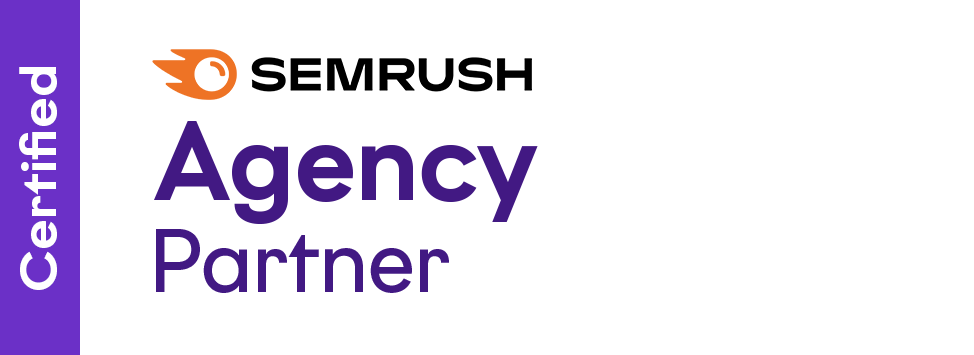Mastering the art of paid social media advertising has become a non-negotiable task for businesses aiming to enhance their online presence and drive meaningful engagement.
In this guide, our specialists at Digital Eagles delve into the key metrics that are essential for tracking the success of your paid social media campaigns. By understanding and analysing these metrics, marketers and businesses can fine-tune their strategies, optimise spending, and achieve their marketing objectives more effectively.
From assessing follower growth to calculating return on ad spend, we cover the indispensable tools and techniques that will empower you to measure and maximise the impact of your social media efforts.
What are Social Media Advertising Metrics?
Social media marketing metrics are ever-shifting data points that help marketers and business owners gauge the effectiveness of social media platforms, content, and strategies, as well as their impact on overarching business objectives.
Without thorough analysis of these metrics, it would be challenging to grasp critical insights, such as low engagement scores. Furthermore, a detailed examination of social media metrics can reveal significant business opportunities, such as the potential to tap into new market segments.
For instance, closely monitoring social media engagement metrics can provide a detailed understanding of how your audience interacts with your content. These metrics offer key insights that can pinpoint opportunities for enhancing engagement. Such insights are also essential for refining your social media marketing strategies to align more effectively with your target buyer personas’ specific needs and behaviours.
Why Should You Prioritise Measuring Your Social Media Performance?
Tracking social media metrics offers a steady stream of transformative business intelligence, shedding light on brand vitality, competitive positioning, and optimal performance standards. According to The 2023 State of Social Media report, more than half of business leaders acknowledge that social media insights significantly shape their company’s strategic direction.
Additionally, these metrics are instrumental in clearly demonstrating the value of social media efforts and your return on investment (ROI)—a task identified as one of the most significant challenges faced by social media teams in terms of ad spend monitoring.
Audience Growth Social Advertising Metrics
Follower growth
Follower growth is a metric that quantifies the net increase in followers over a designated period. To determine this figure, simply subtract the follower count at the start of the period from the follower count at the end.
While the total number of followers might not provide comprehensive insights, understanding the increment in followers can be a robust indicator of the ROI effectiveness of specific content types, campaigns, and social media strategies.
Follower growth rate
The follower growth rate represents the rate at which your audience size is expanding or contracting, expressed as a percentage over a specific period.
This is calculated using the formula:
(Net Followers Gained During the Period / Initial Number of Followers) x 100
This rate helps you understand the pace at which your audience base is changing.
Awareness Social Advertising Metrics
Impressions
Impressions measure the number of times a post is displayed to users at the post level. They are an essential indicator of content popularity, suggesting that individuals may view a post multiple times.
Not every social media platform provides data on both reach and impressions. For instance, TikTok equates ‘total video views’ to impressions, while platforms like Twitter and YouTube report impressions without reach data.
Although impressions offer valuable insights into the potential visibility of your content, businesses must analyse them alongside other metrics to fully understand performance. If your objectives include increasing awareness and educating your audience, you should consider a blend of impressions, engagement, and conversion rates.
Reach
Reach refers to the number of unique viewers a post can attract, indicating the distinct individuals who have seen the post at least once.
Understanding the difference between reach and impressions can initially be challenging. For example, if a single account user sees a post three times, that counts as three impressions, but the user contributes only once to the total reach. Tracking both metrics is key, particularly if your social media goals are centred on enhancing brand awareness and perception. Some users may need multiple touchpoints with your branded materials before making a desired action (such as clicking a link or making a purchase), which can give more context to your ad spend monitoring.
Video views
Views are a significant indicator of the level of awareness your video content generates. This metric becomes even more potent when combined with other indicators such as view duration, engagement, or shares, which provide a broader context for evaluating the impact of your video content. They will also help you in creating targeted audiences across various platforms.
ROI Social Advertising Metrics
Conversion rate
The conversion rate is a core metric that gauges the effectiveness of your social media ads or campaigns in persuading individuals to take a specific action, such as making a purchase, subscribing to a newsletter, registering for an event or a webinar, downloading a guide, or visiting a webpage.
You can calculate the conversion rate by using the formula:
[Total Number of Social Media Conversions / Relevant Metric (i.e. site visits, clicks)] x 100
Most analytics tools can automatically compute this for you. If your conversion rate is low during your ad spend monitoring, consider employing A/B testing on your ads or campaigns to refine messaging, creative elements, and calls to action (CTAs).
Conversions
Understanding your conversion rate is an important task, but it’s also valuable to know the actual number of conversions your ad, post, channel, or campaign is generating.
A conversion occurs when an individual completes a desired action, such as purchasing from your site or registering for an event. A social conversion specifically refers to a user who comes to your site through a social media channel and makes a purchase during that visit.
Social media referral traffic
Referral traffic in web analytics refers to the sources through which users land on your website. Social media referral traffic specifically accounts for visitors who arrive at your site directly from social media platforms.
The most effective method to track this is by employing UTM tracking. This involves adding specific codes to URLs shared on social media, such as blog posts or product links. This allows you to precisely monitor your website’s traffic from various social media channels, posts, and ads through tools like Google Analytics.
Website traffic
Although tracking website traffic may not be a primary responsibility for your social media team, it remains an important metric to evaluate alongside your social media efforts.
Linking an increase in website traffic directly to social media activities, from specific campaigns to the introduction of new content formats or viral posts, can significantly demonstrate the impact of social media on broader business objectives.
Tools like Google Analytics provide visual insights into web sessions directly attributed to specific social channels, enhancing the understanding of social media’s influence on website engagement.
Social Engagement Metrics
Post engagement rate
The engagement rate measures the level of interaction your audience has with your content and the effectiveness of your brand campaigns. Engaged consumers show their interest and connection with brands by participating in actions such as liking, commenting, and sharing posts.
Likes, comments, retweets, reactions, etc.
Engagements such as likes, comments, retweets, and reactions represent direct interactions with your posts. While these individual metrics might seem superficial alone, they accumulate significance when aggregated.
Analysing these metrics at a broader level can reveal which posts are most effective and what resonates best with your audience.
Shares
Shares represent a more specific engagement metric. When certain content pieces are shared more frequently than others, it provides insightful data and indications around the type of content people are willing to distribute among their networks, thereby enhancing your brand’s visibility and awareness.
Paid Social Advertising Metrics
Click-through rates (CTR)
Click-through rate (CTR) measures the ratio of clicks on your content to the total number of impressions it receives (i.e., how many times the ad was viewed). A high CTR indicates that your ad is performing well. However, it’s important to note that CTRs can vary significantly across different industries, networks, and types of content.
Common areas where CTR is crucial include:
- Email links and call-to-action buttons
- Pay-per-click (PPC) advertisements
- Links on landing pages
- Social media advertising
- On-site interactive elements like buttons and images
Before launching campaigns, it’s advisable to look into industry benchmarks for CTR, and continually monitor and adjust your ads based on their performance.
A CTR calculator will give you the results using the following formula:
(Total Clicks / Total Impressions) x 100
Cost per click (CPC)
Cost per click (CPC) is the amount you pay for each click on your paid content. This metric is closely related to cost per impression, which measures the cost per thousand impressions. Advertisers often set a maximum CPC cap; for instance, Google suggests a $1 maximum for Google Ads. By comparison, Facebook’s average CPC is about $0.94, generally less expensive than LinkedIn, Instagram, and YouTube advertising.
To calculate CPC, divide the advertising cost by the number of clicks. For average CPC, divide the total cost of clicks by the total number of clicks. Understanding your average CPC is crucial for optimising ads to improve engagement.
Cost per thousand / Cost per mille (CPM)
The cost per thousand impressions, commonly known as the Cost per mille (CPM), measures the cost of advertising per 1,000 impressions. The metric is pivotal when planning and budgeting for campaigns that aim to increase brand awareness through broad exposure.
Most analytical platforms will have an in-built CPM calculator, but you can also use the following formula:
(Total Ad Cost / Total Impressions) x 1000
This calculation will give you the cost of receiving 1,000 views of your advertisement.
Understanding CPM is key for evaluating the cost-effectiveness of different advertising platforms or campaigns. It allows you to allocate your advertising budget more efficiently. It also helps you compare the costs of reaching audiences across various media in terms of ad spend monitoring, ensuring that you’re maximising the impact of your investment in terms of visibility.
Web conversions
Web conversions occur when a visitor to your website takes a desired action, such as making a purchase, reading an article, or signing up for a webinar. Tools like Google Analytics can link web conversions directly to visitors who came from social media, facilitating an understanding of how social interactions contribute to specific web actions.
Many social platforms now support in-app shopping features. Tracking purchases made directly from social media can help you connect social media activities to actual business revenue.
Return on ad spend (ROAS)
A return on ad spend (ROAS) calculator shows the revenue generated from an ad campaign relative to the expenditure on that campaign. ROAS provides a detailed view of the financial return on a specific ad campaign, making it an excellent metric for justifying ad expenditures or reevaluating underperforming ads.
But how to calculate ROAS on your own?
ROAS is calculated by dividing the revenue earned from social ads by the ad cost for those ads or campaigns. This result is typically expressed as a ratio; for example, a ROAS of 5:1 means you earn $5 for every $1 spent on advertising. This metric is pivotal for ad spend monitoring, specifically assessing the effectiveness of your advertising efforts and guiding future budget allocations.
Need Help Understanding Your Social Advertising Metrics?
Struggling with the meaning of CPM versus CTR? Need help understanding your ROAS calculator? Speak with our experts at Digital Eagles today to discuss everything from effective ad spend monitoring to creating campaigns that convert.



















